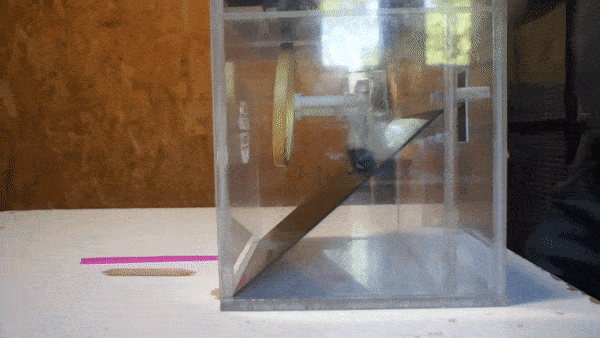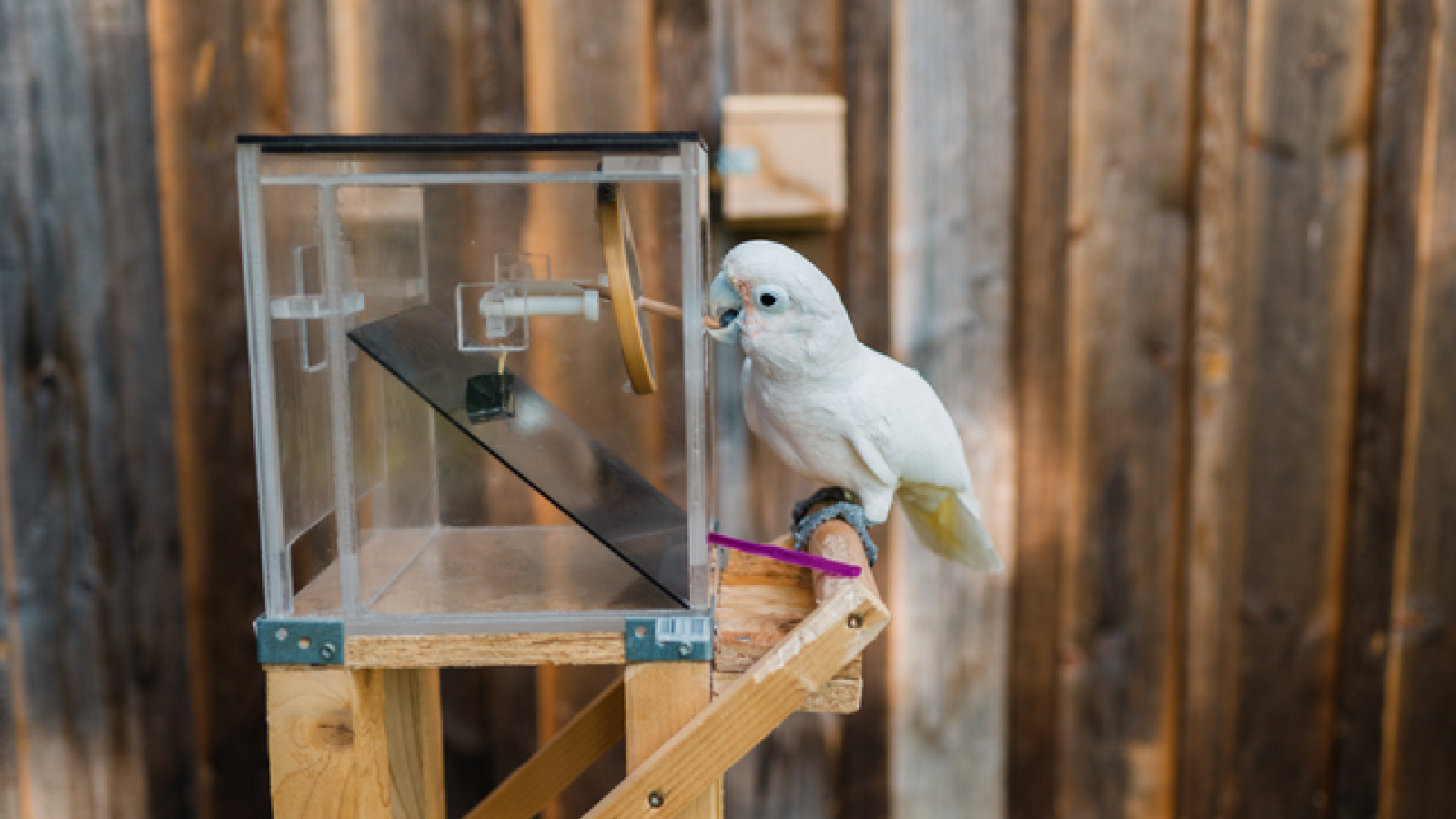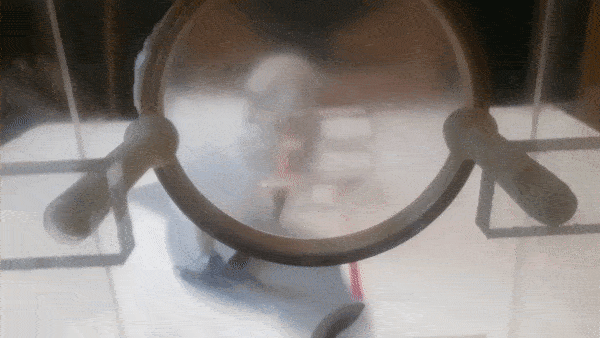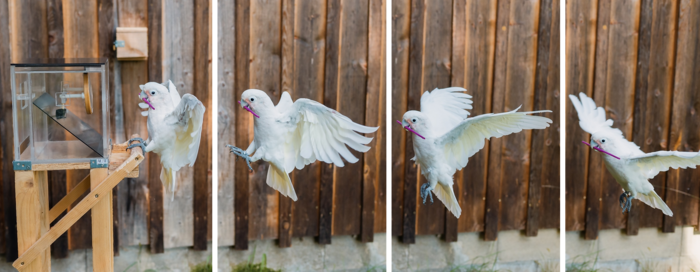Cockatoos join humans and chimps as only species that can use a set of tools
In a series of new experiments, Goffin's cockatoos were able to use a set of different tools to complete complex tasks. The brainy birds can decide which gadget works best and carry their varied equipment around with them.

Cockatoos can combine multiple tools to complete a complex task, a feat scientists previously thought only chimpanzees and humans could do, a new study reveals.
Tool use has been observed in a handful of animals including chimps, gorillas, orangutans, sea otters, dolphins, octopuses and crows, as well as some cockatoos. But in most cases, these animals can only use a single tool to complete simple tasks.
Scientists first discovered that Goffin's cockatoos (Tanimbar corella) could use tools by accident, when captive cockatoos used sticks to reach nuts trapped behind fencing in a laboratory setting. Since then, the brainy birds have been taught to play a rudimentary game of golf, where they use a stick to sweep a ball into a hole.
In a 2021 study published in the journal Current Biology, researchers found that wild-caught Goffin's cockatoos used up to three different tools to extract seeds from a particular fruit. However, it was unclear if the avian Einsteins thought of the tools as individual items or a set.
In the new study, published Friday (Feb. 10) in the journal Current Biology, a separate team of researchers showed that wild-caught Goffin's cockatoos could use tools as a set, and can even carry the tools around with them when the situation calls for it.
Related: Tenacious 'trash parrots' locked in escalating 'arms race' with humans Down Under

In the new experiments, the birds had to retrieve cashew nuts from behind a clear sheet by using a short, pointy stick to break open the barrier, before fishing out the nuts with a long plastic straw. This is unlike any known cockatoo behavior, so the researchers were confident that the task could not be carried out using previously learned behavior.
Sign up for the Live Science daily newsletter now
Get the world’s most fascinating discoveries delivered straight to your inbox.
Seven out of the 10 cockatoos in the study successfully extracted the nuts, and two of those seven (named Figaro and Fini) completed the task within 35 seconds on their first attempt, which stunned researchers.
"With these experiments, we can say that, like chimpanzees, Goffin's cockatoos not only appear to be to using toolsets, but they "know" that they are using toolsets," study lead author Antonio Osuna-Mascaró, an evolutionary biologist at the University of Veterinary Medicine Vienna in Austria, said in a statement. "Their flexibility of behavior is stunning."

Next, the team switched up the task. They repeated the experiments using separate boxes with and without a membrane. "The cockatoos had to act according to the problem; sometimes the toolset was needed, and sometimes only one tool was enough," Osuna-Mascaró said.
During the second experiments, some of the birds picked up one tool, released it, then picked up a second tool before returning to the first. The individuals that displayed this "switching" behavior performed better overall in this specific test, he added.
Finally, the team wanted to find out if the cockatoos could transport their toolset with them. To do this, the birds had to carry the two tools together in their beaks and either climb a short ladder or fly from another platform. The cockatoos were able to do this by jamming the stick inside the straw and carrying it as a single item.
Related: Monkeys in Indonesia use rocks as 'sex toys'

"We really did not know whether the cockatoos would transport two objects together," study co-author Alice Auersperg, a cognitive biologist at the University of Veterinary Medicine Vienna, said in the statement. "It was a little bit of a gamble because I have seen birds combining objects playfully, but they very rarely transport more than one object together in their normal behavior."
Just like before, only some of the boxes had a membrane barrier, so the birds had to decide whether the problem required them to decide in advance to transport one of the tools or both of them. Most of the cockatoos transported the toolset on an as-needed basis, further indicating that they knew ahead of time when two tools were required, though some had to make two trips if they made a mistake.
The results show that "there's a lot more to be learned about cockatoo tool use," the researchers wrote in the statement. Next, the team plans to continue studying the cockatoos' decision-making and metacognition, the ability to recognize their own knowledge.

Harry is a U.K.-based senior staff writer at Live Science. He studied marine biology at the University of Exeter before training to become a journalist. He covers a wide range of topics including space exploration, planetary science, space weather, climate change, animal behavior and paleontology. His recent work on the solar maximum won "best space submission" at the 2024 Aerospace Media Awards and was shortlisted in the "top scoop" category at the NCTJ Awards for Excellence in 2023. He also writes Live Science's weekly Earth from space series.









